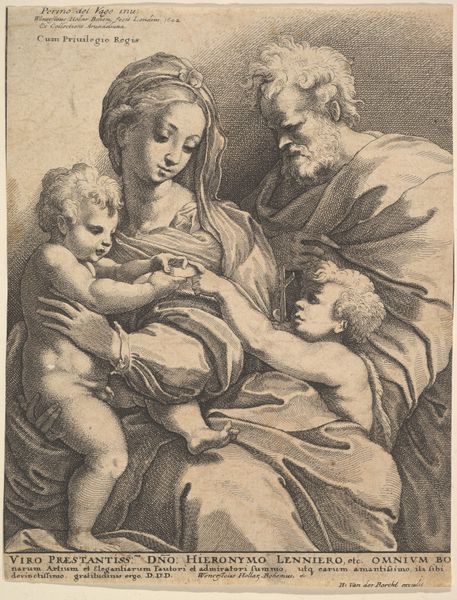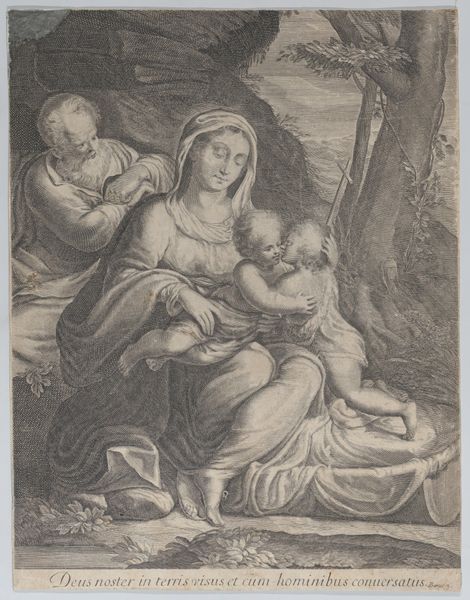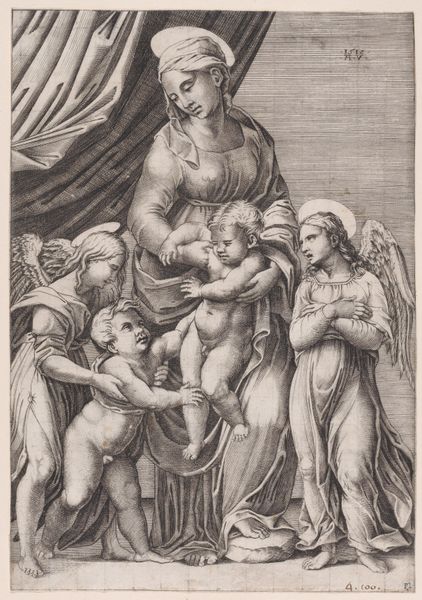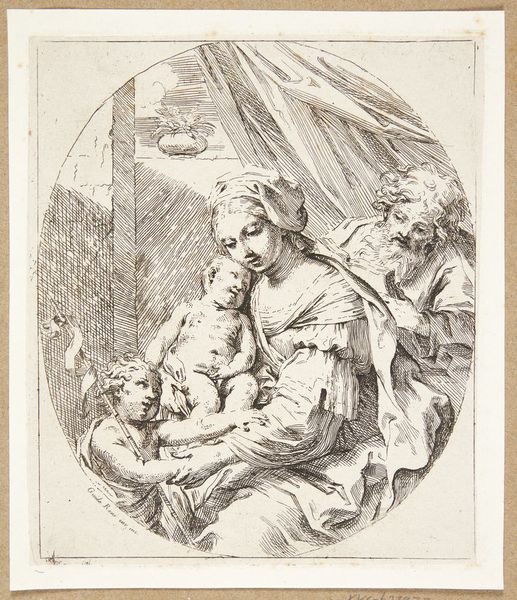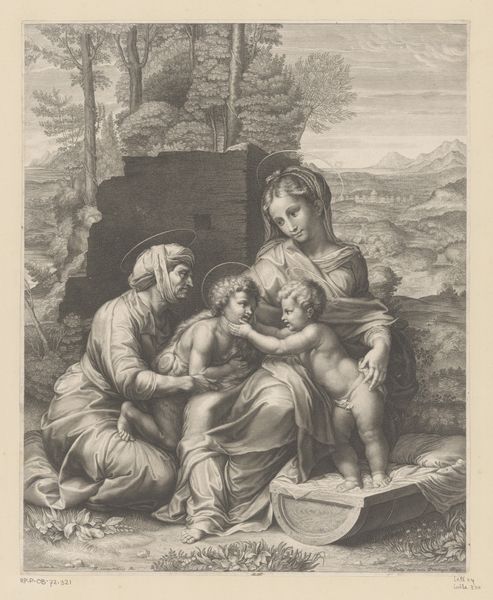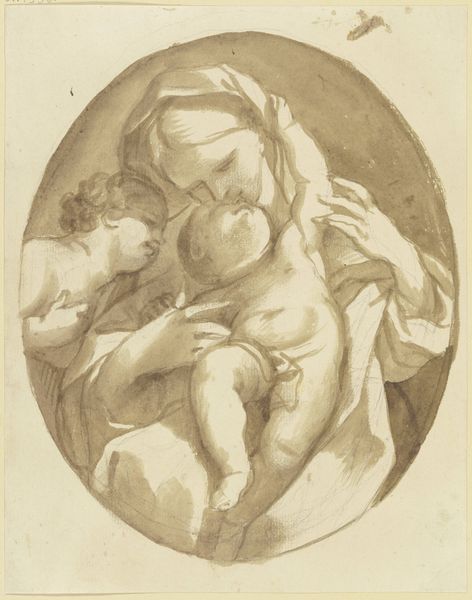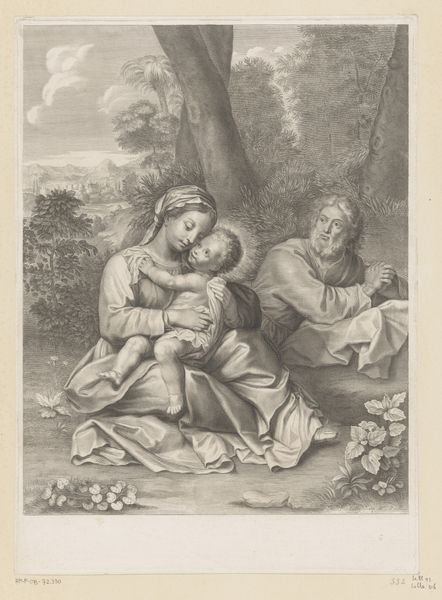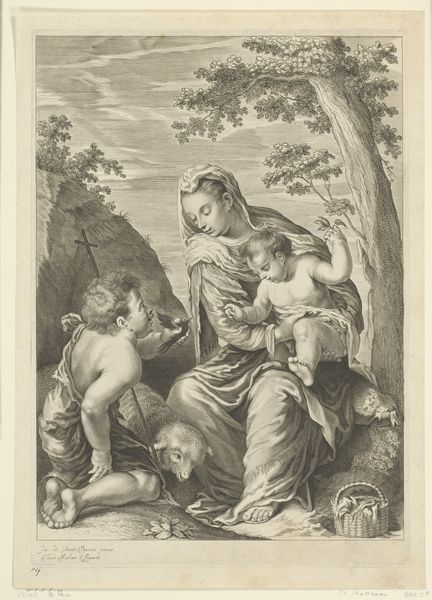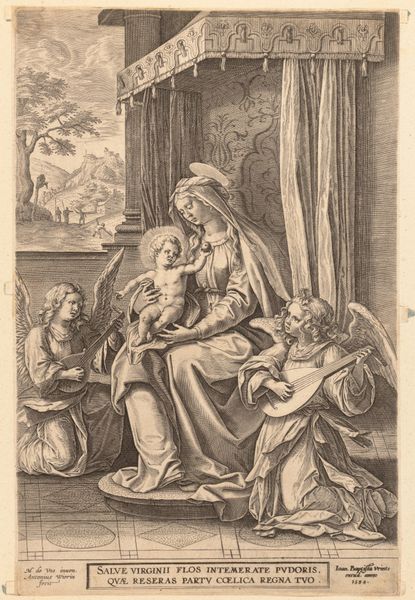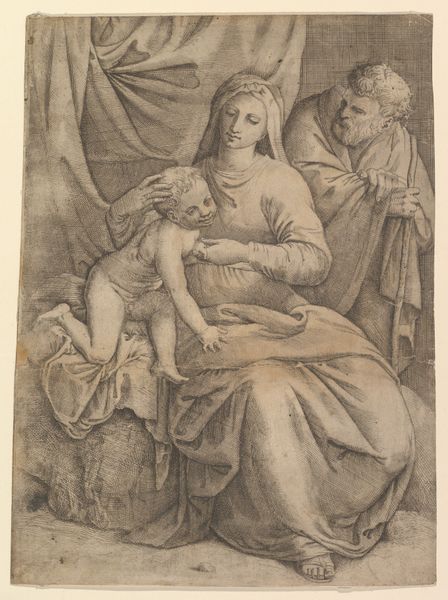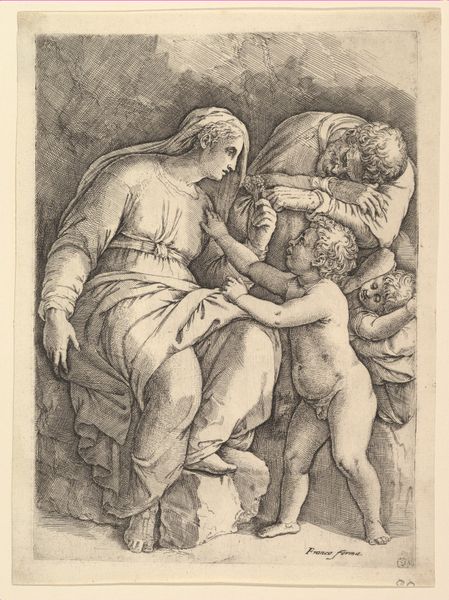
drawing, pencil
#
drawing
#
figuration
#
pencil
#
history-painting
#
academic-art
#
realism
Dimensions: height 130 mm, width 121 mm, height 342 mm, width 495 mm
Copyright: Rijks Museum: Open Domain
Curator: Here we have an evocative drawing, titled "Maria kneeling with Christ and John the Baptist." Though created by an anonymous hand, we believe it dates back to somewhere between 1822 and 1834. What captures your attention first? Editor: The tenderness, undeniably. It feels… unguarded. The softness of the pencil, the way light seems to embrace them. Though, that fabric looming in the background feels oddly… weightless, doesn’t it? Curator: It’s quite dreamlike, isn't it? Look closely at how the artist used academic realism—almost hyperreal in their depictions of the human form. Yet the draping around them flows in a different current altogether. The entire piece carries an unmistakable aura of divine contemplation. Editor: Indeed. The central image, a huddle of mother and children, could read universally, were it not for the implicit story of sacrifice imbued within the iconic religious imagery. It echoes countless Renaissance paintings, but reduced to its most elemental emotional form, absent color, laid bare by the pencil's touch. The symbol here is clear: nurturing is entwined with premonition. Curator: Precisely. Note how the figures almost appear to lean on one another, seeking solace, hinting at the inevitable— the artist deftly uses the body language and imagery of familial unity to amplify their narrative force. It invites contemplation of faith’s role in human relationships, perhaps? Editor: Or maybe it simply asks us to look inward. After all, archetypes of maternity exist everywhere, yet we are constantly recreating their imagery in different visual forms throughout art history to try to reveal universal anxieties and affections— Curator: Yes, anxieties and affections as portrayed via a religious narrative. Editor: And stripped bare like this in grayscale we, too, get to become draftsmen and women in this tender familial composition. We bring our mark through observing. Curator: So well observed, that this little-known study invites endless interpretation even centuries after its creation. Editor: A study brimming with enough intimate intensity to almost see colour bleeding off the page from where we’re standing!
Comments
No comments
Be the first to comment and join the conversation on the ultimate creative platform.
